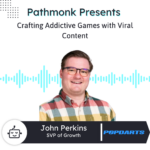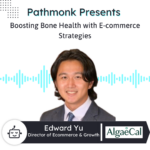SaaS
Introduction
Bostjan is passionate about his latest venture that helps businesses and entrepreneurs adopt high performance teamwork using disruptive email collaboration technology. During his career he has been growing and starting businesses in various sectors of the software industry operating out of Slovenia, USA and the UK and today he shares how his learning about the free trial & demo CTA on their website.
Today he shares his learnings about growing the business. Key insights of the conversation evolve around their strategy on how to win clients online. Offering a product demo, a trial or both – Bostjan shares his insights and results…
Deep dive into offering a product demo or a free trial…
Pathmonk: What does that mean that there is a lot of SEO work that your team is doing on those keywords that you were describing? Or is there other channels that are.
Bostjan Bregar : We do both content, we do podcasts, we do blogs, we do a yes, this is a very important part. We also use very traditional paid acquisition, Facebook, paid search, and stuff like that. We even do, we even invest something into referral marketing. We use a specter, a spectrum of channels, but mostly it boils down to three, four, channels where, yes, one of the more important ones is, is he a SEO.
Pathmonk: I would be curious then in that system that you were describing with the different marketing channels, the role of the website etc.?
Bostjan Bregar : Yes. It’s another very interesting, data point for us. It’s like, what we’ve discovered is it’s important that it has a professional field, but otherwise, in the market we go for, we see that people very quickly go from yes or no. Do I try it out or not? But the emphasis is on the journey from the website moving forward. What we’ve discovered is our conversion rates on the website are very high. If you look at industry standards, because we think that most of these people are fast paced. They want to try, they want to a test that they, they just figure out is this the right thing? And then they very quickly go to, trying out the product and that’s where we put a lot of our, the journey of how do they come into the product, how do they learn the new behavior? What is the new behavior, why are they doing it? and, and getting that part right is for us, where we think, where we saw the biggest value or the biggest, investment needed.
Pathmonk: I also saw on the website that you’re offering the download obviously of the tool to try (…) but you’re also offering: Request a demo call-to-action. I would be curious, are you focusing on both of those ways that somebody is a self starter and the demo, or how do you think about that to have those both offerings on the page?
Bostjan Bregar : So, it’s another very interesting question because it’s a constant debate. Do you have one or two secures? It’s a conversion rates. Normally go down if you have too many options on, on, on the table. So, what we’ve discovered is that, people coming from one journey and we’re not doing a lot of landing pages, we actually concentrate everything into one place, which could change in the future. It’s like once people are coming into, based on the journey they have different, there’s different context. They come within and eh, and the context of their coming in from that email space. I want a better email where I can also collaborate. They want to try the product as quickly as possible. When it comes to coming through the and Mark space, they’re expecting a demo because the first thing they’re expecting to do is set it up and to set it up. It’s easier if they go through the demo. Because we have these two journeys and we haven’t decided how to do the landing pages and all that, we have these two and at the same time both of these entry points actually teach us about the journey and there is the value of this multi access entry into, into our a bat form and allows us to learn from both.
Pathmonk: The last question on the website is, you mentioned that the conversion rate is relatively high. I would be wondering why do you think that is? What did you learn?
Bostjan Bregar : It wasn’t like these conversions where those numbers a long time ago. It’s like with everything, if the more you understand your target customer, the more you understand what brings him closer to making the decision. And, and by understanding what they want to see and what is the obstacle of them saying yes to the next step. We made it and don’t, don’t, one thing we always did is with this target customer that I talk about, it’s that it has to be really simple. So, a very simple, very, I call it the language, language changed in the last two years tremendously because it had to adapt the languages that Axonify is more towards, these users.Getting the hook wasn’t about telling all the utility we have in the product, but it was about making sure that we put the right words in there so that they see it and say, okay, they get a, and so we had to adapt to their context and it had to be simple so that it didn’t hit have to, the more they read, the lower the conversion rate, the less they read and the quicker they sold their words, the quicker they could come into the product. That’s a process of trial and error, as you probably know. It’s not like this, we woke up and we knew it. It was for a long time, we didn’t even know who our target user is. Once the target user is quite clear and you understand what he’s looking for and you understand what the <inaudible> he’s working within, it becomes an easier, and then when you sometimes change and we, the numbers go down and then we figure out, okay, let’s go back to, we, the, the, the website this week is going to be very different to the website next week because we have a, a what I call a, not only the product, get some monthly release with a lot of new stuff, but the website improves on a regular basis to adapt to what we learn.
(…)











